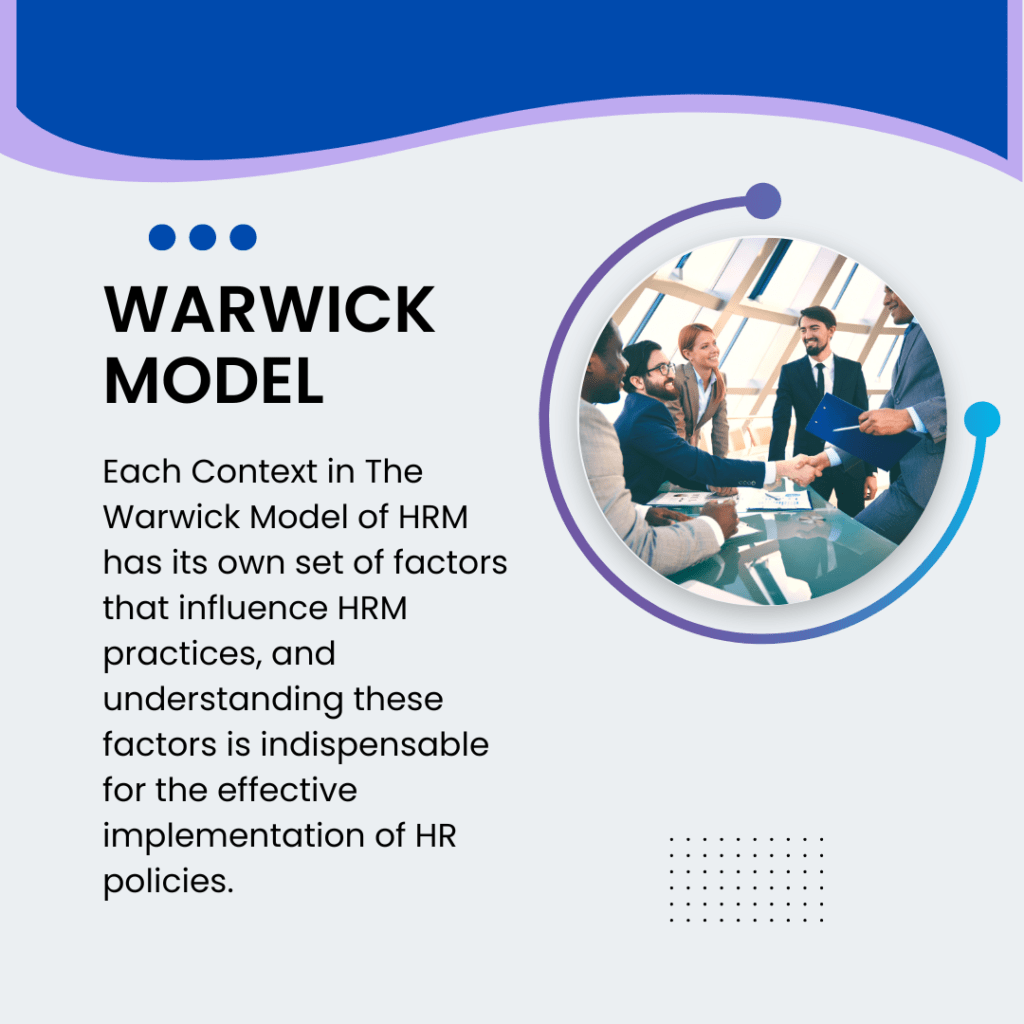In today’s fast-paced business world, human resources are invaluable assets for any organization. With the increasing cruciality of HRM (Human Resource Management), it is essential for companies to develop a holistic HR model that aligns with their overall business strategy. One such model is the Warwick Model of HRM, which provides a framework for understanding HRM within different organizational contexts.
Introduction
The Warwick Model of HRM was developed by Hendry and Pettigrew in 1990 at the University of Warwick. The model emphasizes the importance of HRM in achieving organizational goals and suggests that the HR function should be integrated into overall business strategy.
The Warwick Model of HRM is divided into: outer context, inner context, business strategy Context, HRM context and HRM content. Each context has its own set of factors that influence HRM practices, and understanding these factors is indispensable for the effective implementation of HR policies.

Outer Context
The outer context refers to the broader external environment in which an organization operates. It includes factors such as the economy, labor market, government regulations, and societal values.
HRM is influenced by factors such as labor laws, trade unions, and demographic trends. For example, changes in the legislations regarding employment rights may require organizations to adapt their HR policies accordingly. Similarly, an aging demography may lead to a shortage of skilled workers, forcing companies to invest in training and development programs.
Inner Context
The inner context refers to the internal environment of an organization, including its culture, structure, and leadership. In this context, HRM is influenced by factors such as organizational culture, leadership style, and employee attitudes.
For example, a company with a hierarchical structure may have a more centralized approach to HRM, while a more flexible organization may have a more decentralized and open approach. An organization with a culture that values innovation and creativity may have more employee involvement in HR policies than one that values tradition and stability.
Business Strategy Context
The business strategy context refers to the overall strategy of an organization. It includes factors such as market positioning, product/service offerings, and competitive advantage.
In this context, HRM is influenced by factors such as the company’s growth strategy, the type of industry in which it operates, and its competitive position. For example, a company that is focused on growth may invest more in recruitment and training programs to attract and retain top talent, while an organization in a highly competitive industry may have a more cut-throat approach to performance management.

HRM Context
The HRM context includes factors such as recruitment and selection, training and development, performance management, and compensation and benefits.
HRM is influenced by factors such as the organization’s culture, leadership style, and business strategy. For example, a company that values employee development may invest more in training and development programs, while a company that values cost-cutting may have a more conservative approach to compensation and benefits.
HRM Content
The HRM content refers to the underlying principles and values that guide HR policies and practices. It includes factors such as the organization’s mission and values, its approach to employee relations, and its commitment to diversity and inclusion.
Conclusion
In conclusion, the Warwick Model of HRM provides a useful and comprehensive framework for understanding HRM within different organizational contexts. By considering the outer, inner, and business strategy contexts, as well as the HRM context and HRM content, organizations can develop holistic HR policies and practices that align with their overall business strategy.





Leave a Reply